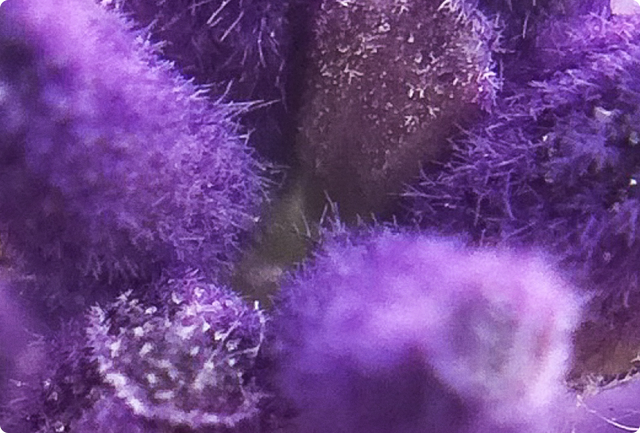About the Oil
Steam-distilled from the richly aromatic heartwood of the Santalum album tree, sandalwood essential oil is treasured for its soft, woody, and grounding scent. It has long been regarded as a sacred botanical — used in rituals, perfumes, and skin remedies for centuries.
What sets sandalwood apart is its richness in α-santalol and β-santalol, two sesquiterpenic alcohols known for their potent anti-inflammatory, antioxidant, and skin-soothing properties. It is one of the most grounding and luxurious oils in the aromatherapy world.
Why You Would Use Sandalwood Essential Oil
- To reduce the appearance of skin inflammation and irritation
- For antioxidant support and environmental skin defense
- To calm and center the mind — especially during meditation
- To support spiritual clarity and deepen personal rituals
- For its deeply hydrating and skin-rejuvenating benefits
Clinical Findings
| Study | Participants & Methods | Key Results | Reference |
|
Sandalwood & Inflammatory Pathways in Psoriasis (2020) |
Topical application of East Indian sandalwood oil on human skin tissue with psoriatic characteristics |
Demonstrated reduction in IL-17– dependent and independent inflammatory pathways, improving skin health markers |
Sharma et al., 2019 |
|
PDE Inhibition & Skin Inflammation (2017) |
Human dermal fibroblasts and keratinocytes treated with sandalwood oil |
Showed inhibition of phosphodiesterase (PDE) activity and downregulation of TNF-α, IL-6, and IL-1β — key inflammatory markers |
Sharma et al., 2018 |
Behind The Science
Sandalwood’s power lies in its rich sesquiterpene profile — particularly α-santalol, which is known to influence several key biological pathways related to inflammation and skin defense.
It works by:
- Inhibiting enzymes involved in chronic inflammatory responses in the skin.
- Modulating cytokines helping reduce skin irritation and discomfort.
- Activating antioxidant defenses, especially protecting skin from oxidative stress.
Together, these actions help explain sandalwood’s traditional use for inflamed or reactive skin, as well as its calming, meditative effects.
How and Where It Grows
Sandalwood trees grow slowly and deliberately — sometimes maturing over decades. Native to India, and now also cultivated in Australia, the highest quality essential oil is extracted from the tree’s heartwood using steam distillation.
Due to its high value and long growth cycle, sustainable harvesting of sandalwood is of increasing importance. Certified and cultivated sources are now favored to protect wild populations.
Use in Ancient Medicine
For millennia, sandalwood has held sacred status in Ayurvedic, Chinese, and Tibetan healing traditions. It was used to calm an overheated body and mind — balancing excess“Pitta” in Ayurveda — and was widely burned as incense to purify spaces and support meditative states.
In traditional Chinese medicine, it was believed to harmonize qi and ease emotional tension.
Symbolism
Sandalwood symbolizes spiritual clarity, inner peace, and connection. Its gentle, enduring aroma is seen as a bridge between the physical and spiritual worlds — inviting tranquility, introspection, and grounded presence. Often associated with devotion and divine energy, it is revered as a sacred botanical across cultures.
INFORMATION provided is intended for informational purposes only and is not meant to diagnose, treat, cure, or prevent any disease. Statements have not been evaluated by Health Canada or the FDA. Please consult a qualified healthcare provider before using essential oils for therapeutic purposes.
References
- Sharma, Manju. (2019). East-Indian-Sandalwood-Oil-Suppresses-IL-17-Dependent-and-Independent-Inflammatory-Psoriasis-Characteristics. Alternative, Complementary & Integrative Medicine. 5. 10.24966/ACIM-7562/100080.
- Sharma M, et al., (2018) East Indian Sandalwood Oil Is a Phosphodiesterase Inhibitor: A New Therapeutic Option in the Treatment of Inflammatory Skin Disease. Front. Pharmacol. 9:200. doi: 10.3389/fphar.2018.00200
- Bommareddy, A., Brozena, S., Steigerwalt, J., Landis, T., Hughes, S., Mabry, E., Knopp, A., VanWert, A. L., & Dwivedi, C. (2019). Medicinal properties of alpha- santalol, a naturally occurring constituent of sandalwood oil: review. Natural product research, 33(4), 527-543. https://doi.org/10.1080/14786419.2017.1399387
- Yan, X.; David, S.D.; Du, G.;Li, W.; Liang, D.; Nie, S.; Ge, M.; Wang, C.; Qiao, J.; Li, Y.;et al. Biological Properties of Sandalwood Oil and Microbial Synthesis of Its Major Sesquiterpenoids. Biomolecules 2024, 14,971. https://doi.org/10.3390/biom14080971
-
Moy, Ronald L, and Corey Levenson. "Sandalwood Album Oil as a Botanical Therapeutic in Dermatology. The Journal of clinical and aesthetic dermatology vol. 10, 10 (2017): 34-39.







